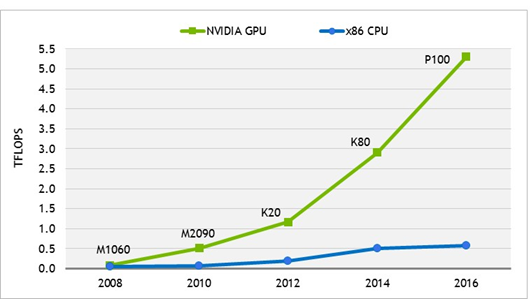![]()
Deep learning is a field with intense computational requirements, and your choice of GPU will fundamentally determine your deep learning experience.
As discussed previously a CPU is divided into multiple cores so that they can take on multiple tasks at the same time, whereas GPU will be having hundreds and thousands of cores, all of which are dedicated towards a single task. These are simple computations that are performed more frequently and are independent of each other. And both store frequently required data into their respective cache memory, thereby following the principle of ‘locality reference’.
There are two main GPU manufacturers i.e AMD and Nvidia. Nvidia GPUs are widely used for deep learning because they have extensive support in the forum software, drivers, CUDA, and cuDNN. So in terms of AI and deep learning, Nvidia is the pioneer for a long time.
Neural networks are said to be embarrassingly parallel, which means computations in neural networks can be executed in parallel easily and they are independent of each other.
In the figure given below, we can see that GPU performance is at least 10x better than CPU for a typical neural network training task. In fact, it is advancements in GPU architecture and performance that have made modern deep learning architectures possible.
Related Posts
Automatic Feature Extraction Using Deep Learning – Technology Magazine (tech-mags.com)
